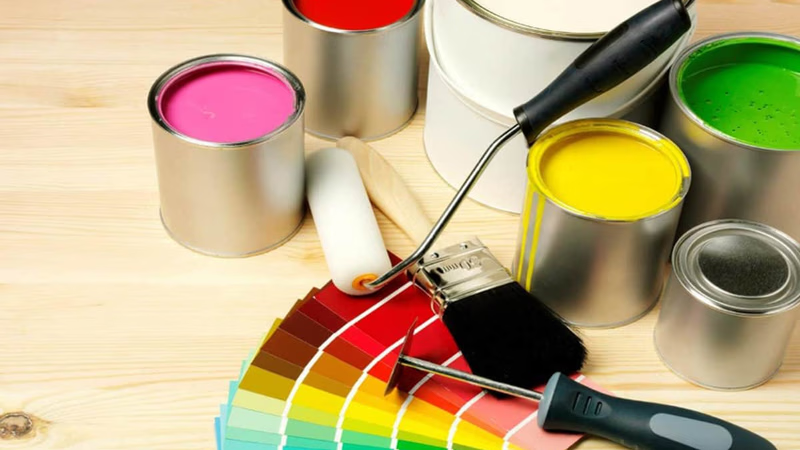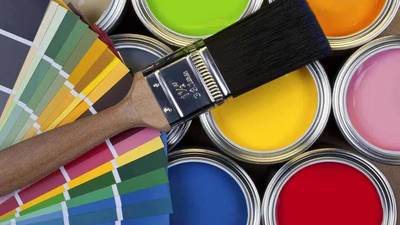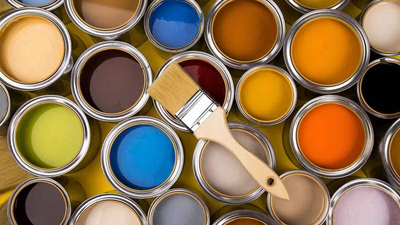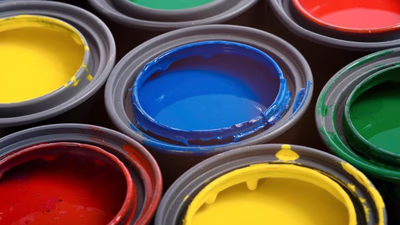
Leading construction paint manufacturers excel in quality and innovation.
The demand for building paints in the global market has increased with the construction boom in many countries. With the ability to meet the needs of the global market and respond to this demand, these countries have achieved a high rank in the competitive market of building paints. These countries emphasize high quality standards, and manufacturers of construction paints in these countries usually have international certifications and standards. This makes their products more reliable in the global market. These countries have access to strong export markets. They are able to meet international needs in the field of construction paints and have significant export power.
Paints produced in these countries are usually produced using high quality raw materials and precise manufacturing processes and advanced machines. This makes the colors have high quality and stability and have good resistance to external factors such as light, heat and humidity. Companies in these countries use advanced technologies to produce building paints. This includes optimized production processes, strict quality control, the use of smart colors and nanotechnology, and other technological innovations. Some colors produced in these countries have smart features. These colors can have features such as self-healing, cooling the building in summer, absorbing heat in winter and providing ambient light. Other factors may also contribute to the prominent position of these countries in the construction paint industry, such as competitive ability, marketing strategy, cooperation with architects and construction companies, and government support policies. Some prominent countries in this field are:
- China is known as the largest producer and exporter of building paints in the world. Reputable Chinese companies operate in this industry and their products are exported to the whole world.
- The United States is one of the largest manufacturers and exporters of construction paints. American companies in this industry have a strong presence in the global market.
- Germany, with its strong industry and advanced technology, is one of the largest producers of construction paints. Famous German companies are known in this industry and their products are exported all over the world.
- India is one of the countries that is very active in the production of building paints. Indian companies play an important role in this industry and their products are exported to global markets.
- South Korea is known as one of the largest manufacturers and exporters of construction paints. Korean companies in this industry are known for their high quality and innovation.
- Italy is one of the most reliable countries in the production of building paints. Italian companies in this industry are known for their superior design and quality.
In these countries, nanotechnology is widely used in the production of building paints. Nano paints have very small particles that give them special properties such as high resistance to stains, antibacterial and self-cleaning. The paints produced in these countries offer a wide range of colors and a variety of color variations. This allows architects and designers to use color variations in their designs and plans. Paints produced in these countries are usually produced in compliance with environmental standards. This includes reducing the use of harmful substances and common organic solvents, using environmental blue dyes, recycling and reusing materials, and reducing greenhouse gas emissions.
These countries have invested significantly in research and development in the field of dyes and related chemicals . These investments have helped to create new technologies and improve production processes. These countries have a high ability to produce building paints. Strong infrastructure, advanced technology, abundant sources of raw materials and skilled labor have helped them to produce building paints efficiently and with high quality. These countries are constantly engaged in research and development and implementing technological improvements in the construction paints industry. They play a prominent role in the production of smart paints, self-healing paints, nano paints and other advanced technologies.
-

The West Asian region, particularly Iran and Turkey, plays a significant role in the production of construction paints. Iran is a leading producer, while Turkey hosts major companies like AkzoNobel Türkiye and Betek Boya. Saudi Arabia"s rapid construction growth has led to increased demand for building paints, contrasting with Kuwait, Qatar, and Bahrain, which rely heavily on imports due to limited domestic production. The region"s unique environmental conditions necessitate paints that resist weather changes and UV rays. The oil-rich landscape of West Asia offers potential for economic growth through local paint production, leveraging raw materials to reduce costs and enhance sustainability. Countries like Germany and India also contribute significantly to the market with high-quality exports. The architectural focus on aesthetics in West Asia drives demand for diverse color options and environmentally friendly products. As urbanization continues, the need for innovative paint technologies is expected to rise.
-

Understanding the target market is crucial for exporting construction paint. Researching local needs, competitors, and regulations helps shape an effective sales strategy. Effective advertising through branding, digital marketing, and participation in exhibitions can attract foreign customers. Direct communication with potential clients via email, phone, or video conferencing is essential for building relationships. High-quality products that meet local standards foster customer trust and long-term partnerships. Adapting to local tastes in color and style is important, as is providing reliable after-sales service. Collaborating with local representatives can facilitate market entry by leveraging their knowledge and connections. Competitive advantages such as pricing, product variety, and fast delivery can differentiate your offerings in a crowded marketplace.
Compliance with export laws and obtaining necessary certifications are vital before entering foreign markets. Understanding cultural nuances enhances business relations. Networking through trade shows and industry events builds valuable connections within the sector. Adhering to specific standards for building paints regarding technical specifications and labeling is mandatory in many regions. Awareness of regulations concerning harmful substances ensures compliance with health and safety protocols.
-

The construction paint market is experiencing significant growth, driven by increased construction activities in developing nations and a post-economic boom in developed countries. There is a rising demand for environmentally friendly paints, prompting manufacturers to produce low VOC options free from harmful substances. Technological advancements have led to innovations such as self-healing and nano-paints, enhancing product performance. Buyers prioritize high-quality paints that offer durability, resistance to environmental factors, and ease of application. Various types of paints are available, including acrylic, latex, oil-based, alcoholic, epoxy, carbonate, silicate, and silicone paints. Each type has unique properties suited for different applications. The trend towards sustainability is evident as consumers seek paints with lower environmental impact and higher color stability. The market also sees a growing interest in smart paints that can adapt to environmental changes. Overall, the diversity of colors and formulations available caters to the evolving preferences of buyers in the construction industry.
-

The global demand for construction paints has surged due to a construction boom, leading to significant advancements in production and technology among leading countries. Nations like China, the United States, Germany, India, South Korea, and Italy dominate the market by adhering to high-quality standards and international certifications. These manufacturers utilize advanced technologies such as nanotechnology and smart features in their products, enhancing durability and functionality. Innovations include self-healing properties and energy-efficient designs that cater to modern architectural needs. The competitive landscape is bolstered by effective marketing strategies, collaborations with architects, and supportive government policies. Additionally, these countries prioritize environmental standards by minimizing harmful substances in their production processes. Their strong infrastructure and skilled labor force further enable efficient production of a diverse range of high-quality paints that meet global market demands.




